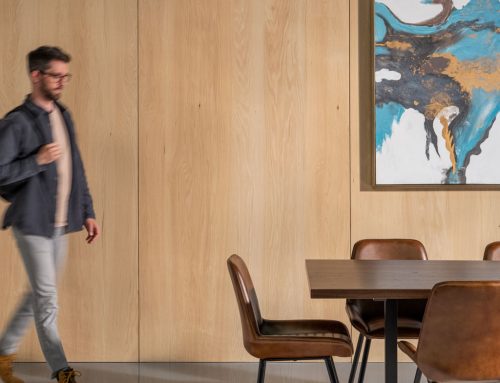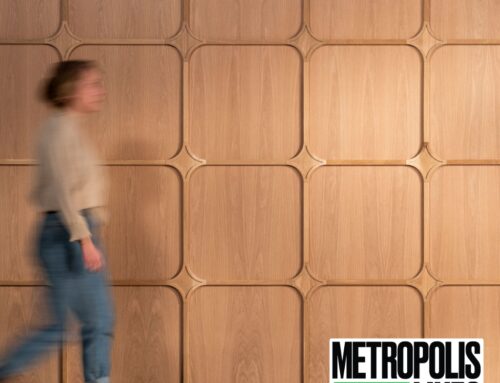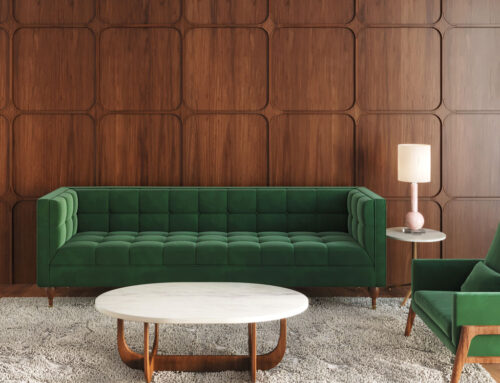Checking The Boxes:
Urban Wood and Biophilic Office Design
The use of the live sawn milling technique provides a less edited, whole grain look that is a natural choice for maximizing biophilic design principles into your office project.
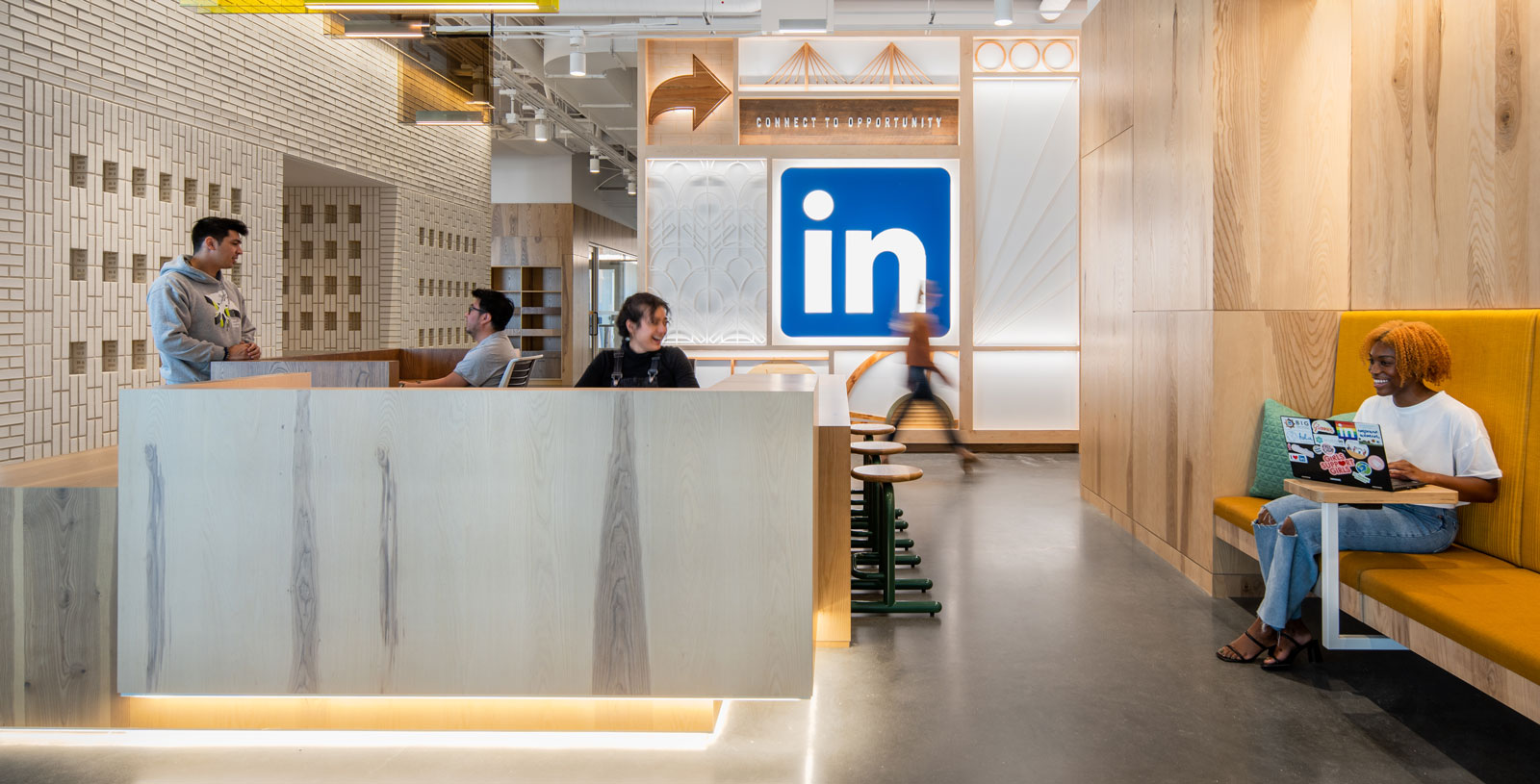
Biophilic Office Design and Wood’s Critical Role
According to the International Living Future Institute, biophilic design within architecture seeks to connect building occupants more closely with nature in three broad areas:
- Providing a direct experience and well-recognized connection to nature
- Incorporating natural patterns and attributes such as shapes, images, sounds and smells that our senses recognize and respond to.
- Connecting people, place and culture; in other words, biophilia “integrates the history, geography, and ecology of an area”.
It is perhaps no surprise that wood, as a building material, has a central place in biophilic office design.
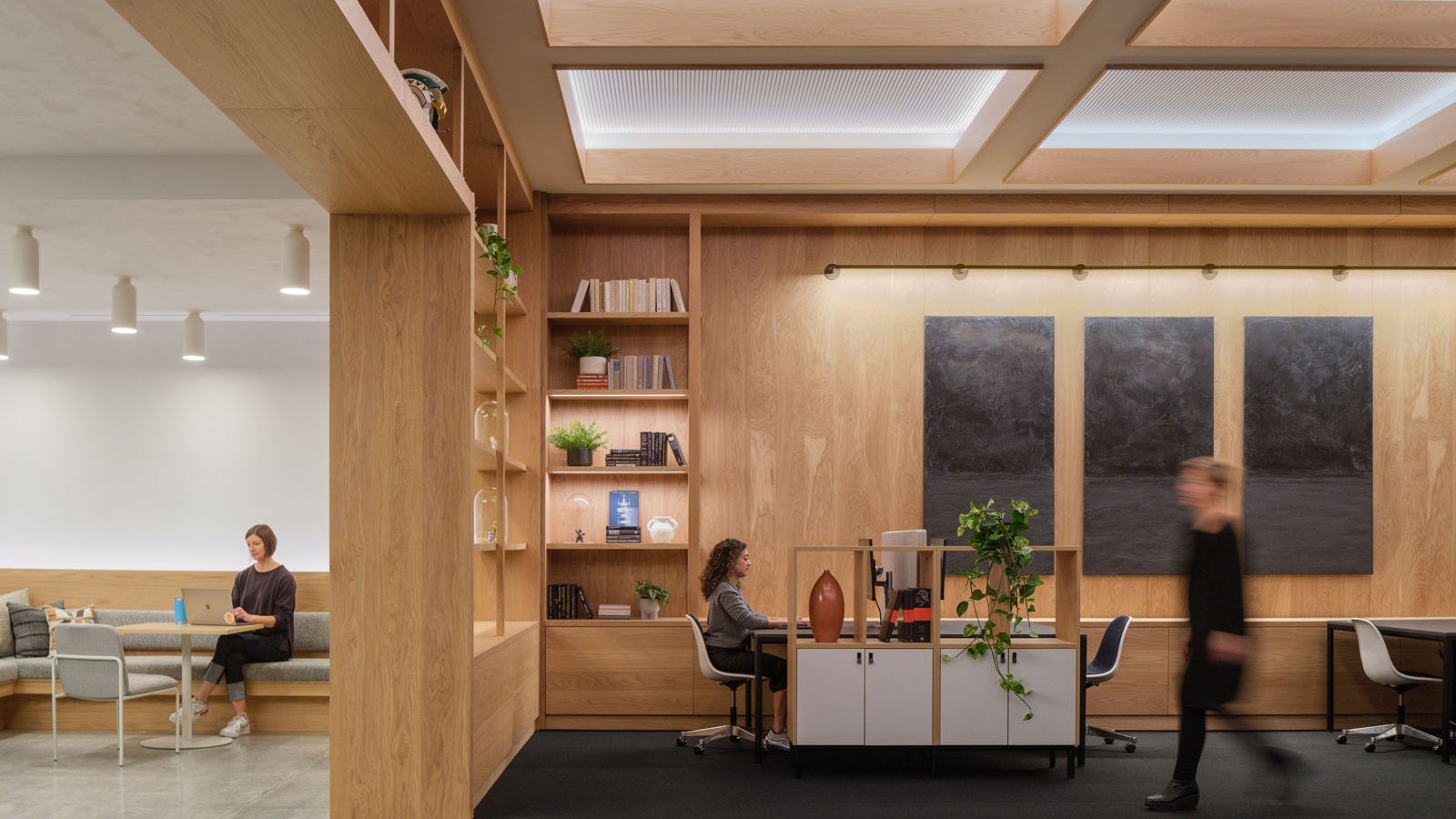
In 2022, Terrapin Bright Green gathered data from a few studies on humans’ biophilic response to wood. The findings confirmed what many of us believe; wood boosts feelings of warmth and comfort as well as lowers blood pressure and stress more effectively than say “adding a few plants.” While wood engages all our senses, the study found that the visual appeal of wood was predominant.
In term of design applications with wood, the study added the following suggestions to optimize biophilic response:
- “Don’t hide the grain”
- Avoid heavy or dark finishes that mask the visual characteristics of wood
- Prioritize grain and contour lines over excessive knots
- Wood on half the surface area of an area was optimal
- Focus on the most visible spaces, such as ceiling and wall panels
Urban Wood and Live Sawn Technique
Urban wood and the way it’s processed allows for a deeper expression of biophilic design principals.
The increasing availability of urban wood is creating opportunities for biophilic design pioneers. Urban wood, which is wood sourced from trees that cities remove due to development, disease, and storms, does not lend itself to processing in large dimensional lumber yards. These traditional lumber yards are the source of our typical and more edited wood grain patterns, including rift, quartered, and flat sawn.
While beautiful and differentiating in terms of wood performance, these sawing techniques were invented to build consistency and predictability in the wood supply stream. In some cases, performance criteria and demands for consistency have led to editing the appearance of actual nature out of wood and wood products.
Let’s take a look:
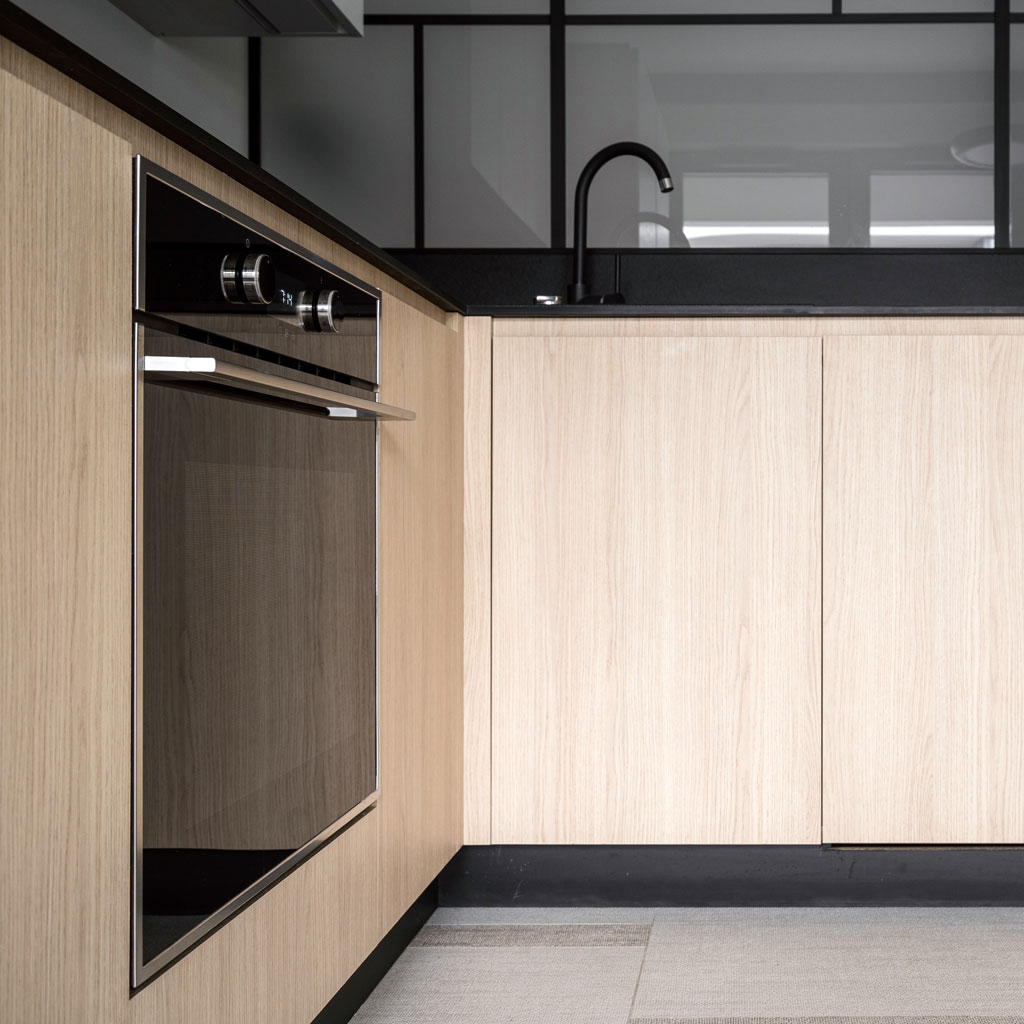
While these intentionally modern wood cabinets are beautiful, they may miss the mark in eliciting biophilic response.
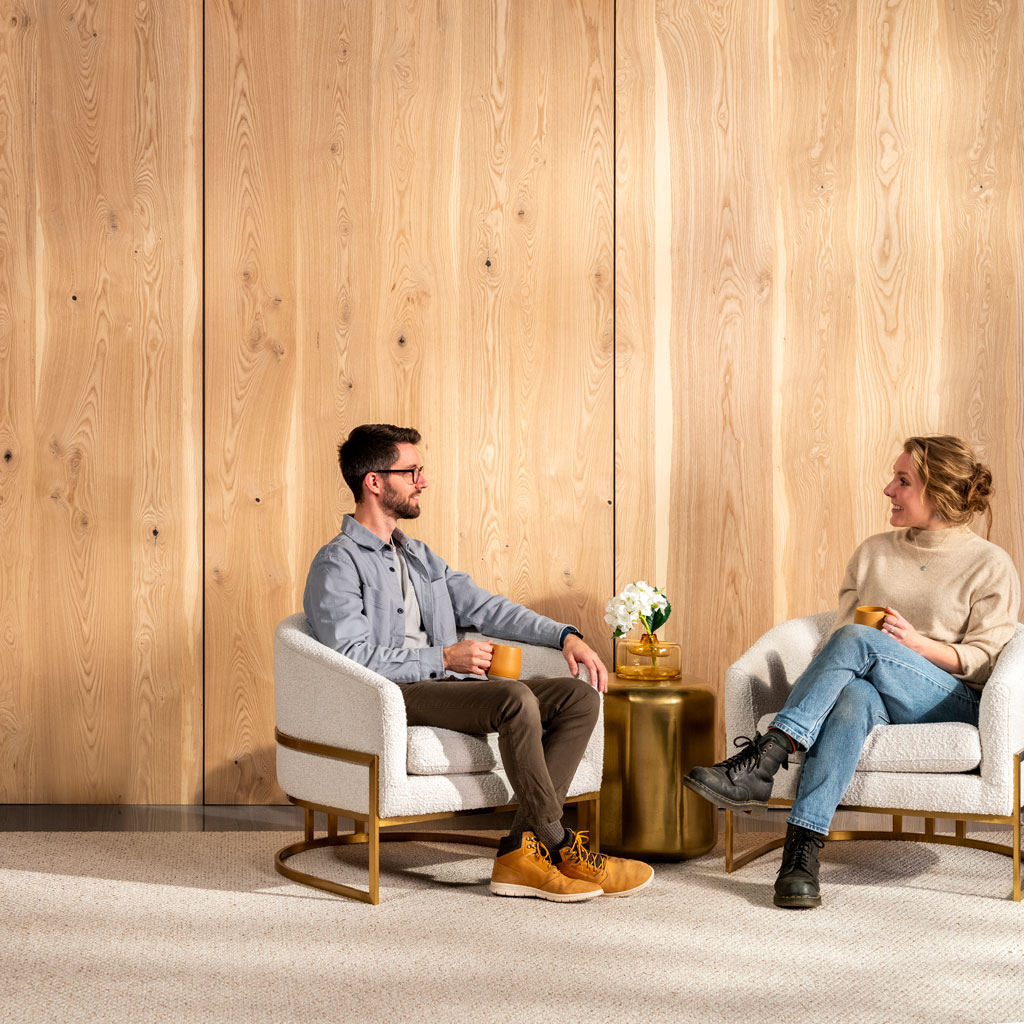
Shown here is our select heart ash veneer wall paneling where the live sawn process provides a whole grained appearance, offering a more literal expression of the tree.
Urban wood, for better or worse, tends to defy traditional lumber processing for several reasons:
- Wide and unpredictable range in species
- Risk of finding metal (think lost cat signs on boulevard trees)
- Often-challenging growing conditions
- Lack of consistent volume needed for large lumber processors
This leaves the milling of urban lumber to smaller and more nimble sawyers who typically choose plain or live sawn slab cutting as their primary techniques to avoid waste and be more efficient.
Urban Wood and Biophilic Design
Urban wood is three-for-three in achieving biophilic design goals:
- Its whole grain appearance distinguishes itself visually in offering a well-recognized connection to nature.
- The abundance of naturally varying lines, curves and contours in wood grain answer the call to incorporate the patterns and shapes of nature.
- The integration of a local wood source from rescued urban trees integrates the history, geography and ecology of an area like no other.
Links and Connections
Nordic Design is steeped in the European tradition of live sawn milling and the prevalence of wood as a design element. Read our blog about this contemporary design movement that is steeped in regional sourcing and a hallmark of biophilic design.
Looking to maximize biophilic impact? See how our UE Live Sawn Collection can provide all your wood needs from a single sustainable source including veneer paneling, cabinetry, furnishings, along with solid and engineered cladding and flooring
For additional additional urban wood resources, visit the Urban Wood Network.
Contact Us

